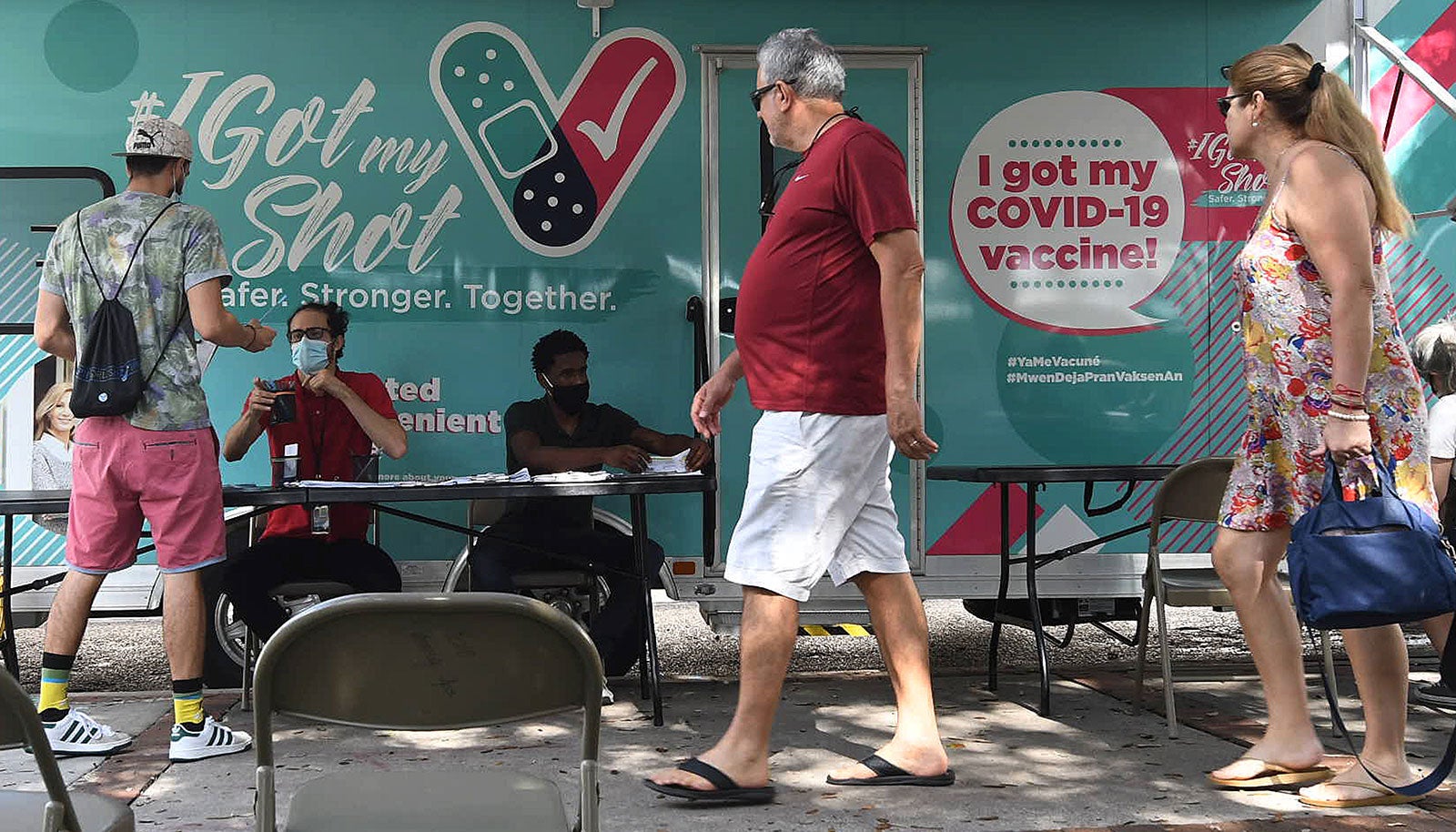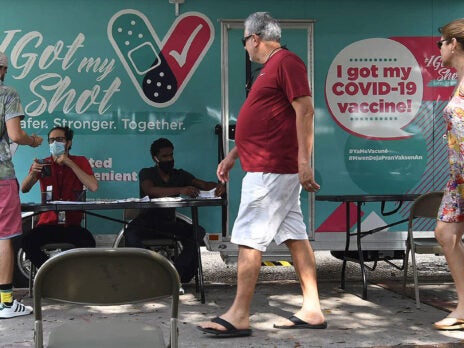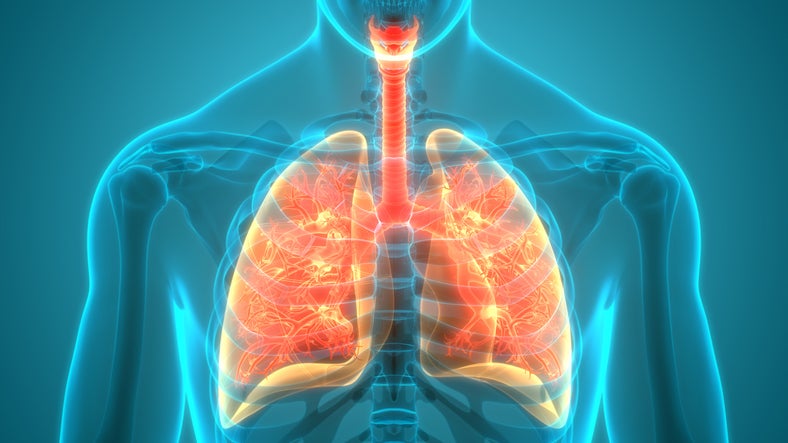
Need to know:
• A third booster dose of mRNA vaccines may increase the number of people with heart inflammation side effects. These issues are mainly seen in previously vaccinated people.
• Underreporting of mRNA vaccines’ heart inflammation is a possibility since people with milder symptoms do not seek medical attention.
• Adenovirus-vectored vaccines’ thrombosis and thrombocytopenia is unlikely with boosters as these rare side effects are primarily observed with the first dose.
How well do you really know your competitors?
Access the most comprehensive Company Profiles on the market, powered by GlobalData. Save hours of research. Gain competitive edge.

Thank you!
Your download email will arrive shortly
Not ready to buy yet? Download a free sample
We are confident about the unique quality of our Company Profiles. However, we want you to make the most beneficial decision for your business, so we offer a free sample that you can download by submitting the below form
By GlobalDataMore people may experience COVID-19 mRNA vaccines’ rare heart inflammation side effects if they are deployed as boosters, experts said. This is due to myocarditis and pericarditis issues mainly observed in people who have previously received an mRNA vaccine dose. However, experts emphasized that the benefit of receiving a booster would still outweigh the risk of having these side effects.
In people who have had milder forms of myocarditis and pericarditis with the second dose of Moderna or Pfizer/BioNTech’s vaccine, symptom severity may increase with the third dose, but there is overall limited data to conclude this as a possibility. As for people who previously sought medical attention for their acute symptoms, it may be best to switch vaccine technologies with the third shot, experts added.
As for the potential booster use of adenovirus-vectored vaccines from AstraZeneca and Johnson & Johnson, the rare side effect of vaccine-induced thrombosis and thrombocytopenia (VITT) may be an unlikely issue considering it is primarily observed with the first shot of AstraZeneca’s double-dose Vaxzevria (AZD1222).
Boosters suggested to combat Delta variant
Initial reports of these rare side effects have grabbed the public’s attention, particularly at a critical point in the US where its robust COVID-19 vaccine uptake in the past few months has stalled due to vaccine hesitancy. These side effects are unlikely to diminish from public eye with the potential of boosters to be deployed down the line to combat the deleterious efficacy effect of the Delta variant or other future variants on currently authorized vaccines. Pfizer made headlines this month as it floated to the US and Europe’s regulatory authorities the possibility of an emergency authorization for boosters.
A Pfizer spokesperson said it will continue to monitor all Comirnaty (BNT162b2) adverse events from clinical trials and from real-world experience. AstraZeneca, Johnson & Johnson and Moderna did not reply to a comment request.
Heart inflammation seen with prior exposure
The risk of myocarditis and pericarditis with mRNA vaccine boosters needs to be monitored closely as it is possible the third dose may lead to an increased frequency of these rare side effects, said Dr James de Lemos, professor of internal medicine, Division of Cardiology, University of Texas Southwestern Medical Center, Dallas. Heart inflammation is mainly observed after the second dose, agreed Dr Han Woong Kim, associate professor of medicine, Department of Cardiology, Duke University School of Medicine, Durham, North Carolina.
In people who have experienced myocarditis after the first dose, they appear to have previously had COVID-19 infection, Kim noted. This suggests that myocarditis following mRNA vaccination requires an initial exposure, either from COVID-19 infection itself or from the first dose of an mRNA vaccine, he added. It is possible that in people who received a different technology for their first dose, and then switched to an mRNA vaccine for their second dose, these people could also experience heart inflammation issues, though more data is needed, de Lemos noted.
According to a 10 June CDC presentation detailing US vaccine safety data collected through 31 May, most heart inflammation events were observed after the second dose (573 events) compared with the first dose (216 events). Also, these side effects were primarily observed in younger men, particularly in the 16–39-year-old age group. Myocarditis is an inflammation of the heart muscle and pericarditis is an inflammation of the lining that surrounds the heart.
Rare side effect cause still debated
Using mRNA vaccines as a booster may lead to more acute heart inflammation in people who have had milder forms of these side effects after the second dose, Kim added. But there are still many knowledge gaps to make more definitive conclusions, such as a clear consensus as to the cause of this side effect, and how many people have had milder forms of this issue, experts said.
The leading hypothesis to the cause of heart inflammation is the immune system’s immunologic reaction to the vaccine, said Dr Erin Simon, emergency medicine physician, Cleveland Clinic Akron General, Ohio. This aligns with the fact that younger people generally have a more exuberant immune system response, de Lemos noted. It is possible that the mRNA vaccines’ lipid nanoparticle vector is also a contributor to the hypersensitive reaction, he added.
But there is also real-world evidence showing people who do have this side effect do not have an inflammatory storm, meaning there could be a more specific side-effect mechanism, de Lemos said. It is possible that the SARS-CoV-2 spike protein antigen produced by the mRNA vaccines binds to the ACE2 receptors in the heart, which leads to the side effect, he noted. SARS-CoV-2 enters lung cells via the ACE2 receptor.
Milder symptoms underrepresented in data
The second knowledge gap is how many people have had milder forms of heart inflammation with the second shot. Current data hinges on people who report symptoms, such as severe chest discomfort and shortness of breath and thus go to the hospital, Kim noted. And so, there is very limited data in people who have milder symptoms, as they may not seek medical help, Simon added. All patients have recovered spontaneously and within a short period, which makes milder patients less likely to self-report, de Lemos said. Varied symptom severity is not unusual in vaccines considering, based on experience with smallpox vaccine, vaccine recipients who have had an increase in myocarditis biomarkers may be still be asymptomatic, Kim noted.
Reassuringly, in virus-related inflammatory issues linked to the heart, long-term issues are uncommon in patients with limited symptoms, Kim said. Major factors indicating severe myocarditis include shock, heart dysfunction and arrhythmias, but these have not been yet been reported in patients receiving mRNA vaccines, he added.
Best to switch vaccine technology
In vaccine recipients who previously had this rare adverse event, whether they should still receive an mRNA vaccine as a booster needs consideration, Kim said. It is possible that the side effect may not be an issue with the booster dose, he noted. This is based on people who had been positive for COVID-19, and then had these symptoms after the first dose, then did not experience the same issue after the second dose, he explained, though this evidence is anecdotal in nature. And so, it may be prudent to switch to a different vaccine technology altogether, de Lemos added.
It may be challenging to collect any early data to make policy decisions regarding mRNA vaccine boosters considering the risk of heart inflammation only surfaced when there were already thousands of mRNA vaccine recipients, Kim said. While experts agreed on the potential of increased frequency and severity of these side effects with boosters, they highlighted the benefit of vaccination outweighed the risk. At present, the risk of experiencing heart inflammation in younger men is 16.1 per one million doses.
The boosters may not broaden the population at risk of this side effect, de Lemos noted. Myocarditis is not typically associated with people with comorbidities, such as in older people who have pre-existing heart disease, he explained. On 30 April, this news service reported using authorized versions of Comirnaty and Moderna's Spikevax (mRNA-1273) as boosters may be enough to offer an immunogenicity boost among vaccinated people, though a booster specific for variants of concern may generate a broader immunogenicity profile.
VITT mainly seen after the first dose
As for adenovirus-vectored vaccines as boosters, it is unlikely for VITT to be a significant issue as it is primarily observed with Vaxzevria’s first dose, experts agreed. According to UK data, there have been 260 cases of VITT up to 5 May with two-dose Vaxzevria, which translates to an overall risk of 10.9 per one million doses. With single-dose JNJ-78436735, it has an overall risk of two per million doses, based on a total of 15 cases, according to US data. Current data underscores the rarity of these events, highlighting the benefit of being vaccinated despite risks, they added.
VITT may also be unlikely with boosters because it has similar features to heparin-induced thrombocytopenia (HIT), whereby patients who display the latter have this issue upon initial use of heparin rather than heparin use over time, explained Dr Geoffrey Barnes, assistant professor, Cardiology and Vascular Medicine, University of Michigan Medical School, Ann Arbor. Vaccine recipients with VITT have elevated D-dimer, a marker used to diagnose thrombosis, and antibodies specific for platelet factor 4 (PF4), which is a marker for platelet activation. HIT is caused by antibodies that bind to heparin/PF4 complexes, which activates platelets and thus promotes a prothrombotic state.
Nebulous link to first dose
It is still unclear why VITT is a primary issue with the first dose, but this could be due to people having pre-existing antibodies against PF4, said Alan Parker, PhD, professor of translational virotherapies, Cardiff University School of Medicine, UK. But it is yet unknown if an initial diagnosis of VITT would have long-term impact on the patient, Barnes noted, citing a lack of information on how long vaccine-induced antibodies that circulate against PF4 remain in the body. Nonetheless, patients recover after two weeks with the help of supportive therapies, he added.
More research is required to solidify the mechanism underlying VITT and therefore mechanisms to prevent it happening, Parker said. One theory is that VITT is initiated by PF4 binding to Vaxzevria’s capsid, which means that the capsid could potentially be modified to reduce the risk of VITT, he added. Adenovirus vector capsids may have to be modified anyway to overcome antivector response which can negatively impact vaccine efficacy, this news service reported 12 February.
VITT also goes by the name of thrombosis with thrombocytopenia syndrome (TTS) in the US. VITT has two features: the first is that platelet counts can decrease which is asymptomatic, and the second involves blood clots and almost all people who have this have acute symptoms, Barnes said. The most significant element of VITT is the latter, so underreporting is unlikely, he added.
Younger people mainly at risk for VITT
It is still unknown why primarily younger people have VITT, Barnes noted, adding that older people with comorbidities do not have the same issue, which would be encouraging for booster use. Countries like the UK offer an mRNA vaccine in people under 40 years old following VITT concerns. In France, it is recommended to swap vaccine recipients under 55 years old who have been given Vaxzevria as the first dose to receive an mRNA vaccine as a second shot to further decrease VITT risk.
On 13 July, the FDA announced it is revising its fact sheet for JNJ-78436735 to include the vaccine having an increased risk of Guillain-Barré syndrome (GBS), based on 100 reported events after 12.5 million doses administered of the single-shot vaccine. While GBS has been observed in other vaccines, the cause of this side effect in JNJ-78436735 still needs clarity, which would help gauge if this would be a running issue with JNJ-78436735 booster use, noted Dr Kiran Thakur, inpatient neurologist, Columbia University Irving Medical Center, New York. In GBS, the body’s immune system damages nerve cells, causing muscle weakness, or in the most severe cases, paralysis.









